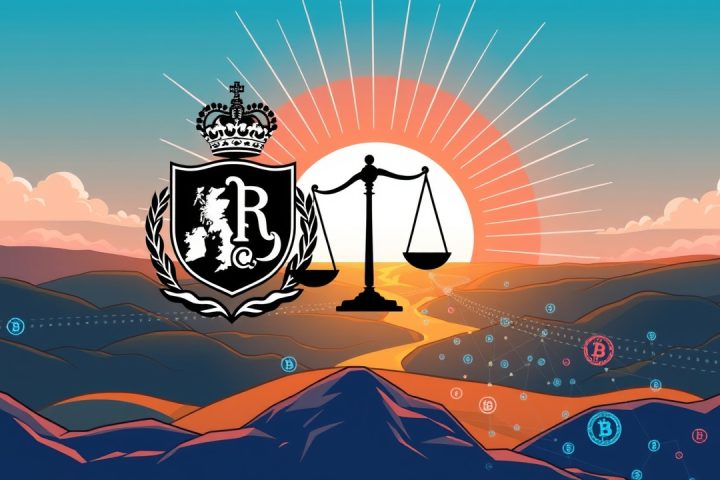Introduction
Bitcoin mining has gained significant attention recently, often criticized for its environmental implications. At its core, mining Bitcoin involves using computational power to solve intricate mathematical problems, resulting in the creation of new bitcoins and the maintenance of the Bitcoin network.
This meticulous process demands enormous amounts of electricity, sparking concerns regarding its carbon footprint and adverse environmental effects. Critics liken the energy usage of Bitcoin mining to a fuel-inefficient car that perpetually runs, raising alarms about sustainability.
Steps Toward Sustainability
In response to these critiques, the Bitcoin mining sector is exploring innovative pathways toward sustainability. Instead of focusing solely on the negative aspects, many miners are now investigating how they can leverage renewable energy to transform the mining process into a greener initiative. This article examines the steps being taken to enhance the ecological stability of Bitcoin mining and how it may evolve into a more sustainable endeavor.
Bitcoin Mining Process
At its essence, Bitcoin mining functions as a large-scale competition among computers worldwide that strive to decode complex algorithms. The initial computer to successfully solve a puzzle earns freshly minted bitcoin as a reward. Contrary to the image suggested by the term “mining,” this does not entail traditional digging; rather, it entails computational work that confirms transactions and secures the overall Bitcoin system.
However, this mining process consumes a staggering amount of energy, often equating to that of a small town, due to the continuous operation of specialized machinery. The environmental implications are substantial, particularly when considering how the electricity used for mining is generated.
Many mining operations rely on fossil fuels, contributing to their carbon footprint. Yet, there is a growing trend among miners to adopt renewable energy sources like wind, solar, and hydropower. In fact, Bitcoin mining consumes approximately 75 terawatt-hours (TWh) of electricity per year, a volume comparable to that of entire nations, such as Argentina or the Netherlands.
“Bitcoin mining consumes approximately 75 terawatt-hours (TWh) of electricity per year, a volume comparable to that of entire nations.”
When comparing Bitcoin mining’s energy consumption with other industries, such as banking and gold mining, it’s apparent that Bitcoin is not alone in its high energy demands.
Innovation and Renewable Energy
Fortunately, innovation is steering the mining industry toward greener practices. Renewable energy utilization is on the rise, with many miners investing in partnerships with green energy firms to ensure their operations have a minimal environmental impact. For instance, large mining conglomerates like Bitmain and Greenidge Generation are making sizable investments in clean energy solutions.
Recent studies estimate that between 40% to 75% of Bitcoin mining operations are already powered by renewable sources, and this percentage is expected to increase as technology develops and renewable energy becomes more affordable.
“Many miners are now situated near renewable energy sources in remote areas, tapping into an unused power supply known as stranded energy.”
Consequently, the Bitcoin sector is beginning to shed its image as an environmental adversary and instead embraces sustainable practices.
Technological Advancements
Furthermore, the technology utilized for mining is evolving as well. Application-Specific Integrated Circuits (ASICs) designed specifically for mining significantly outperform older models, yielding higher efficiency while consuming less energy. Additionally, the adoption of advanced cooling systems invigorates these operations by minimizing energy costs.
Programmers are enhancing Bitcoin’s blockchain technology to bolster efficiency, enabling innovations like the Lightning Network to ease the transactional load on miners.
The Future of Bitcoin Mining
An intriguing dimension of Bitcoin mining is its potential to stimulate clean energy production. This approach not only stabilizes the renewable energy market by providing continuous demand but also enhances the financial viability of solar and wind projects. Collaborative efforts are blooming worldwide, as shown by the establishment of solar-powered mining farms in Kenya that promote both technological advancement and local economic empowerment.
Despite the dramatic narratives surrounding Bitcoin mining’s environmental record, a nuanced perspective reveals that it is on a trajectory toward a more sustainable future. The mining landscape is shifting resources, embracing efficiency, and showing a commitment to transparency in energy consumption practices at a remarkable pace.
“The evolution of this industry could serve as a model for other sectors seeking to align economic pursuits with ecological stewardship.”
With an increasing number of operations pledging to achieve carbon neutrality through green initiatives and renewable energy partnerships, there’s a notable shift toward cleaner technology in this sector.
Conclusion
In summary, while Bitcoin mining has historically faced scrutiny regarding its ecological impact, current trends indicate a significant transformation toward sustainability. With continuous advancements in technology and energy practice, Bitcoin mining may very well redefine its role within the global conversation on energy consumption and environmental responsibility.




